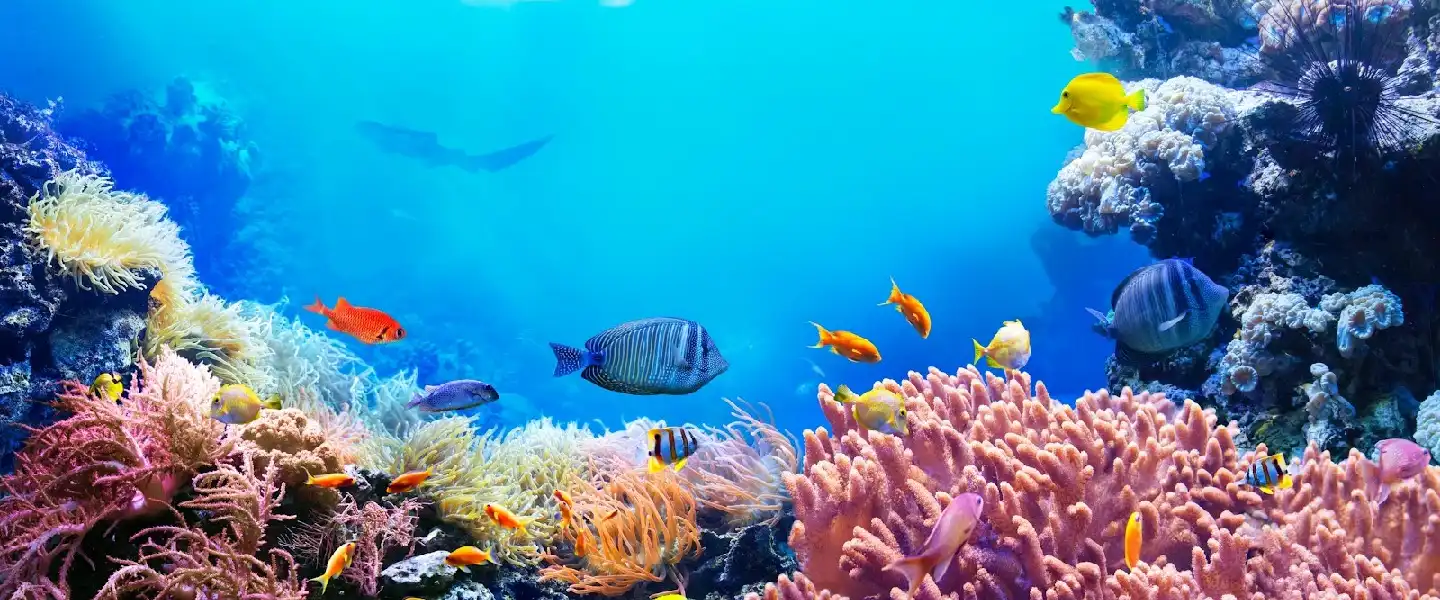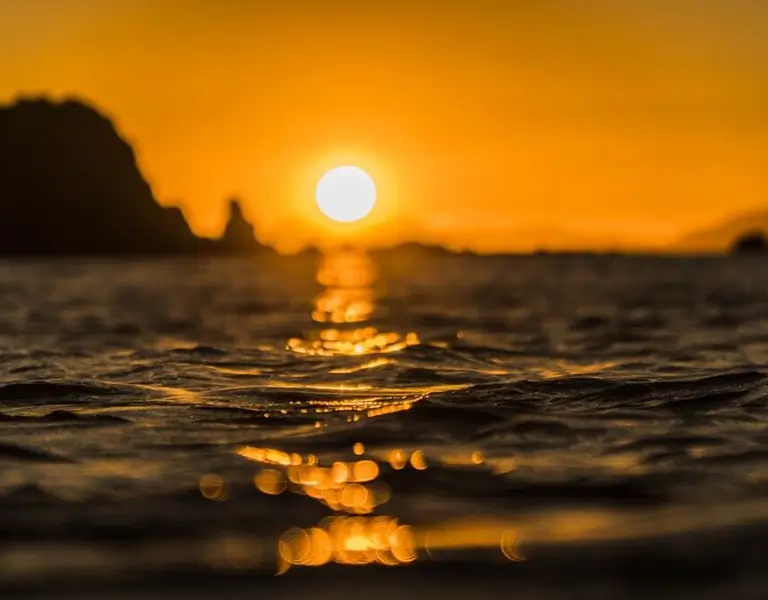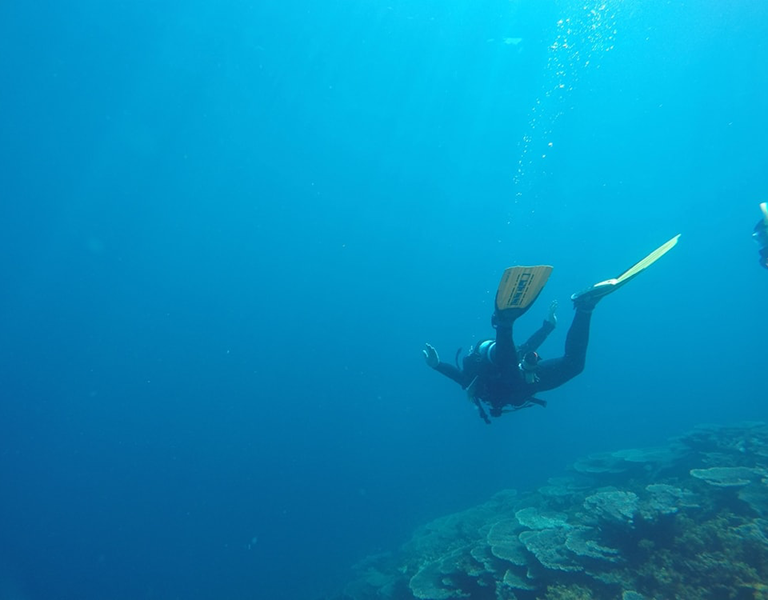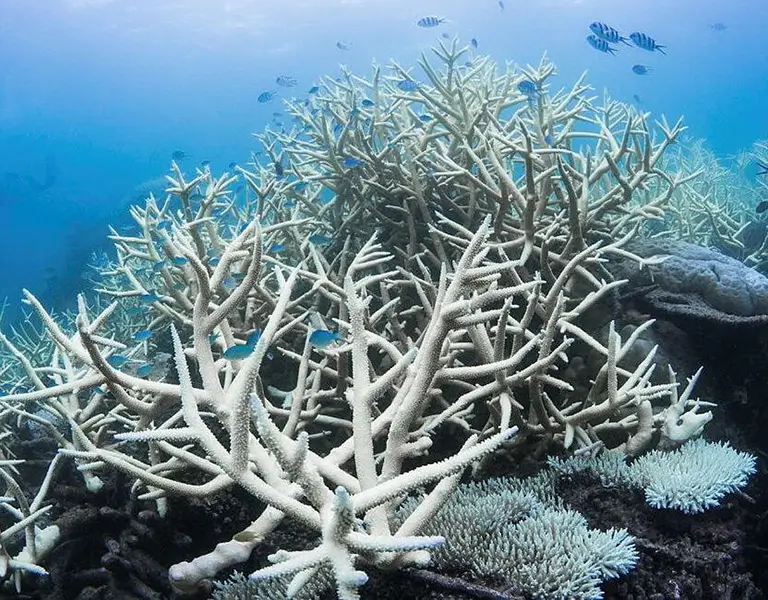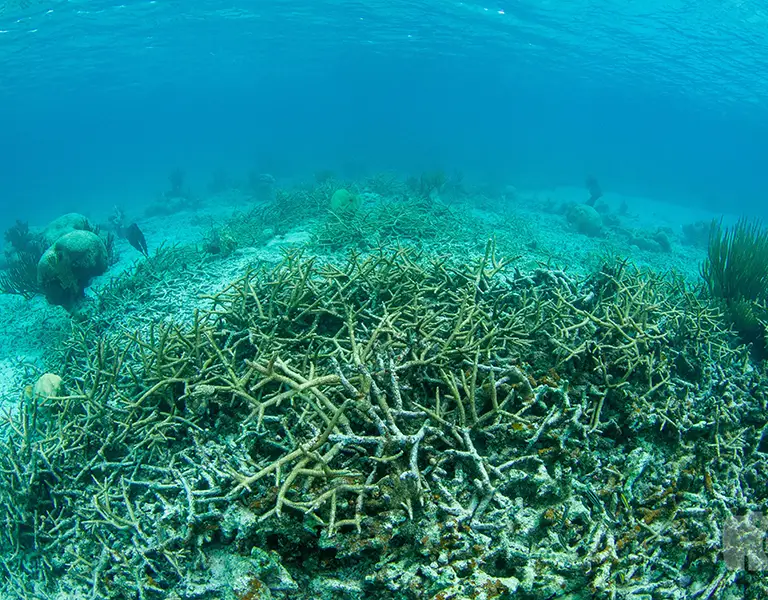Coral reef ecosystems represent some of Earth’s most vibrant and essential marine environments, supporting extraordinary biodiversity while providing critical services to our planet. These underwater cities teem with life, offering coastal protection, supporting fisheries, and harboring countless marine species that depend on their complex structures for survival.
Key Takeaways
- Coral reef ecosystems are among the most diverse ecosystems on Earth, supporting over 25% of all marine species despite covering less than 1% of the ocean floor1
- Climate change, ocean acidification, and human activities pose significant threats to world’s coral reefs, with many experiencing devastating bleaching events
- Healthy coral reefs provide essential ecosystem services including coastal protection, fisheries support, tourism revenue, and cultural heritage preservation
- Innovative coral restoration techniques, including land-based coral farming and assisted evolution, offer hope for reef regeneration and climate resilience
- Individual actions such as adopting corals, supporting conservation organizations, and reducing carbon emissions can help conserve coral reefs for future generations
Understanding Coral Reef Ecosystems
Coral reef ecosystems are remarkable marine environments built by tiny organisms called coral polyps. These small, soft-bodied animals create the foundation for some of the world’s most biologically diverse ecosystems. Coral reefs exist primarily in shallow, warm tropical waters where sunlight can penetrate to support the symbiotic relationship between corals and microscopic algae called zooxanthellae2.
The relationship between coral polyps and zooxanthellae exemplifies nature’s ingenuity. These microscopic algae live within coral tissues, converting sunlight into energy through photosynthesis and sharing nutrients with their coral hosts. In return, corals provide protection and nutrients for the algae. This symbiotic relationship enables reef-building corals to grow efficiently in nutrient-poor tropical waters, creating the calcium carbonate skeletons that form reef structures.
Coral reefs grow incredibly slowly, typically expanding just 1-5 centimeters annually3. Stony corals, the primary reef builders, extract calcium carbonate from seawater to construct their skeletons. Over thousands of years, these coral skeletons accumulate to form massive reef structures that can be seen from space, like Australia’s Great Barrier Reef.
Coral reef ecosystems function as complex three-dimensional structures that create numerous microhabitats. The reef structure provides shelter, feeding grounds, and breeding areas for countless marine organisms. These biologically diverse ecosystems support intricate food webs where every species plays a crucial role in maintaining ecological balance.
The Science Behind Coral Formation
Coral polyps are cnidarians, related to sea anemones and jellyfish4. Each polyp exists as an individual animal but connects to thousands of others to form a coral colony. The polyps secrete calcium carbonate to create cup-shaped skeletons called corallites, which provide protection and structure for the soft coral tissues.
The formation of coral skeletons involves complex biochemical processes. Corals extract calcium and carbonate ions from seawater, combining them to form calcium carbonate crystals. This process, called calcification, depends heavily on water chemistry, temperature, and the presence of symbiotic algae5.
Different coral species exhibit varying growth forms and rates. Branching corals like staghorn and elkhorn corals grow relatively quickly but are more fragile. Massive brain corals and boulder corals grow more slowly but create sturdy, long-lasting structures. Foliose corals form plate-like structures that maximize surface area for light capture.
Coral spawning represents one of nature’s most spectacular reproductive events. Many coral species release billions of eggs and sperm simultaneously during specific lunar cycles, creating underwater “snowstorms” of genetic material. This mass spawning increases fertilization success and helps maintain genetic diversity within coral populations6.
Sexual reproduction in corals produces planktonic larvae called planulae that drift in ocean currents before settling and developing into new coral colonies. This process enables coral genetic exchange between distant reefs and helps establish new coral communities on suitable substrates.
Coral Fragments and Natural Propagation
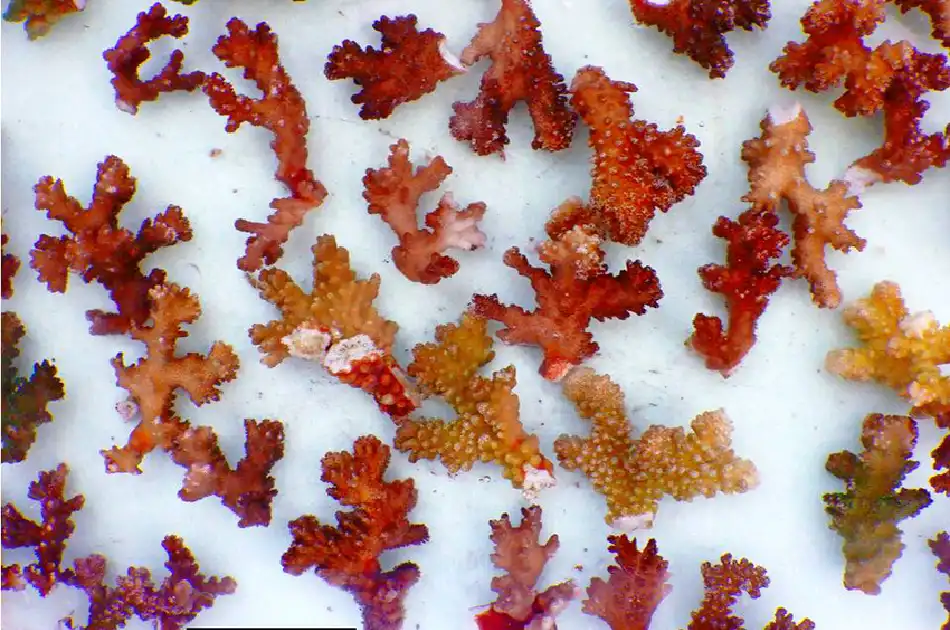
Coral fragments play crucial roles in natural reef propagation and recovery processes. Storm damage, fish feeding, and human activities create fragments that can develop into new coral colonies if they settle in suitable locations.
Fragment survival depends on size, species, environmental conditions, and the presence of suitable substrate for attachment. Larger fragments with intact tissue generally have higher survival rates than smaller pieces.
Asexual reproduction through fragmentation allows rapid local expansion of successful coral genotypes. This process helps corals quickly colonize new areas and recover from disturbances without waiting for sexual reproduction cycles.
Natural fragment dispersal by currents and waves helps maintain genetic connectivity between reef areas. Fragments can travel considerable distances before settling, contributing to reef resilience through genetic mixing.
Human-assisted fragment propagation has become a standard restoration technique, mimicking natural processes at accelerated rates. Coral gardening programs carefully collect and tend fragments in nurseries before outplanting them to degraded areas
Marine Ecosystems Within Coral Reefs
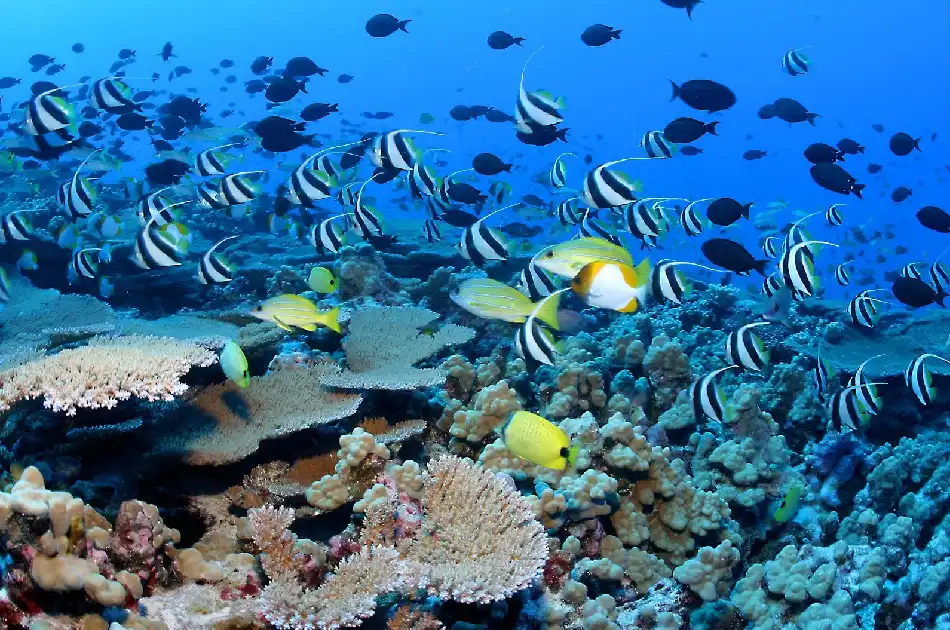
Marine ecosystems within coral reefs operate at multiple scales, from microscopic interactions between coral polyps and zooxanthellae to complex predator-prey relationships among large marine species. The reef structure creates countless niches that support specialized organisms adapted to specific conditions.
Lagoons between barrier reefs and shorelines create unique marine environments with different water circulation patterns and depths. These areas often support different coral species adapted to varying light and wave conditions, contributing to overall reef ecosystem diversity.
Sand channels and openings in reefs create highways for marine life movement and important spawning aggregation sites for many fish species. These areas experience different water flow patterns that bring nutrients and remove waste products from the reef system.
Seagrass beds often grow adjacent to coral reefs, providing nursery areas for juvenile fish and feeding grounds for sea turtles and manatees. These grasslands help stabilize sediments and filter nutrients, creating a buffer zone that protects coral reefs from coastal runoff and pollution.
Mangrove forests frequently border coral reef systems, creating interconnected coastal ecosystems. Mangroves serve as nurseries for many reef fish species, filter pollutants from terrestrial runoff, and provide coastal protection during storms. The roots of mangrove trees create complex underwater habitat structures that support diverse marine life.
Coral Growth Factors
Coral growth depends on numerous interconnected environmental factors that determine reef health and expansion rates. Water temperature plays a crucial role, with optimal growth occurring between 68-86°F (20-30°C). Temperatures outside this range stress corals and can cause mortality7.
Light availability significantly influences coral expansion patterns. Shallow-water corals receive abundant sunlight for their zooxanthellae partners, enabling rapid calcification. Deeper-water corals adapt to lower light conditions by developing larger polyps and more efficient light-gathering structures.
Water chemistry, particularly pH and carbonate ion concentration, affects coral calcification rates. Ocean acidification reduces carbonate availability, making it increasingly difficult for corals to build and maintain their skeletons. Even small changes in water chemistry can significantly impact coral expansion.
Nutrient levels influence coral health and growth rates. While corals require some nutrients, excessive nitrogen and phosphorus from pollution can promote algal growth that competes with corals for space and light. Balanced nutrient levels support healthy coral expansion while preventing harmful algal blooms.
Water circulation brings fresh oxygen and nutrients to corals while removing waste products. Wave action and currents help prevent sediment accumulation on coral surfaces and facilitate feeding by bringing plankton within reach of coral polyps.
Salinity changes affect coral physiology and growth. Corals tolerate only narrow salinity ranges, and freshwater influx from heavy rainfall or river discharge can stress corals and slow growth rates. Stable salinity levels are essential for healthy coral development.
World’s Coral Reefs: Geographic Distribution
World’s coral reefs span tropical and subtropical oceans between 30°N and 30°S latitude, with the greatest diversity concentrated in the Indo-Pacific region. This area, known as the Coral Triangle, contains over 75% of all known coral species and serves as the center of marine biodiversity8.
The Pacific Ocean hosts the most extensive coral reef systems, including the Great Barrier Reef, countless Pacific island reefs, and the coral atolls of Micronesia and Polynesia. This ocean’s vast expanse allows for isolated populations to evolve unique characteristics while maintaining connectivity through larval dispersal.
Caribbean coral reefs feature different species compositions than Pacific reefs, with only about 65 hard coral species compared to over 700 in the Indo-Pacific9. Despite lower species richness, Caribbean reefs support high levels of endemism and play crucial ecological roles in the Atlantic basin.
Indian Ocean coral reefs extend from the Red Sea to the western Pacific, including the Maldives, Seychelles, and Mauritius. These reefs often develop around volcanic islands and demonstrate how coral communities adapt to different geological settings and environmental conditions.
Red Sea coral reefs showcase remarkable heat tolerance, surviving in waters that would severely stress corals elsewhere. These reefs provide insights into coral adaptation mechanisms and potential resilience strategies for future climate scenarios.
Tropical Reefs and Latitudinal Limits
Tropical reefs reach their maximum diversity and development between the tropics of Cancer and Capricorn, where warm waters and high light levels support optimal coral propagation. Water temperatures above 18°C year-round are necessary for most reef-building corals.
Marginal reefs exist at the latitudinal limits of coral propagation, often showing reduced diversity but unique adaptations to cooler temperatures and seasonal variation. These reefs may provide insights into coral adaptation to climate change.
High-latitude reefs face different challenges than tropical systems, including seasonal temperature fluctuations, reduced light during winter months, and different patterns of ocean circulation and nutrient availability.
Range expansions of tropical species toward higher latitudes have been documented as sea temperatures warm. Some tropical fish and coral species now occur hundreds of kilometers beyond their historical ranges.
Subtropical reef communities differ from tropical reefs in species composition, growth rates, and seasonal patterns. These systems often show greater resilience to temperature fluctuations due to adaptation to naturally variable conditions.
Healthy Coral Reef Characteristics
Healthy coral reefs exhibit several distinctive characteristics that indicate ecosystem vitality and resilience. High coral cover, typically above 40%, provides the structural foundation necessary to support diverse marine communities10. Living corals should display vibrant colors indicating the presence of healthy zooxanthellae partnerships.
Species diversity serves as another indicator of reef health. Flourishing reefs support numerous coral species, fish families, and invertebrate groups. This diversity ensures ecosystem stability and provides insurance against environmental disturbances that might affect individual species.
Balanced fish populations indicate healthy reef ecosystems. Presence of herbivorous fish like parrotfish and surgeonfish helps control algal growth, while predator populations indicate a complete food web. The absence of key functional groups often signals ecosystem dysfunction.
Clear water with low nutrient levels characterizes healthy reef environments. Excessive nutrients promote algal blooms that compete with corals for space and light. Crystal-clear water allows maximum light penetration for photosynthesis by zooxanthellae.
Active fish recruitment and coral reproduction demonstrate ecosystem vitality. Flourishing reefs show evidence of successful spawning events and settlement of juvenile corals and fish. This recruitment ensures population replacement and long-term ecosystem sustainability.
Structural complexity in three dimensions provides numerous habitats for different species. Flourishing reefs feature diverse coral expansion forms creating caves, overhangs, and crevices that shelter marine life from predators and currents.
Barrier Reef Systems Around the World
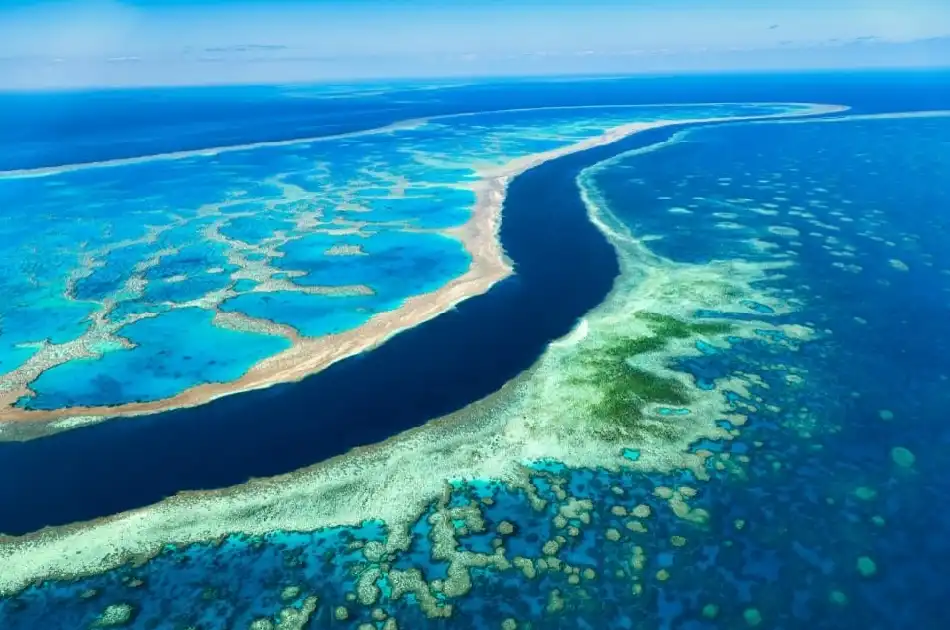
There are 3 major growth forms for coral reefs, including barrier, fringing reefs, and atolls. Barrier reefs represent the largest and most complex coral reef formations on Earth. These massive structures run parallel to coastlines, separated by deep lagoons that create unique marine environments. The Great Barrier Reef remains the most famous example, but other significant barrier reef systems exist worldwide.
The Belize Barrier Reef, stretching 300 kilometers along Central America’s coast, ranks as the second-largest barrier reef system. This UNESCO World Heritage site supports 65 coral species, 350 mollusks, and hundreds of fish species11. The reef system includes the famous Blue Hole, a perfectly circular sinkhole that attracts divers from around the world.
New Caledonia’s barrier reef in the Pacific Ocean encompasses 1,600 kilometers of reefs and lagoons12. This system demonstrates remarkable endemism, with many species found nowhere else on Earth. The reef’s isolation has allowed unique evolutionary processes to occur over millions of years.
The Andaman Nicobar reef system in the Indian Ocean showcases how barrier reefs develop around island chains. These reefs survived the 2004 tsunami and have shown remarkable resilience, though they face increasing pressure from tourism and coastal development.
Madagascar’s barrier reef system along the Mozambique Channel supports exceptional marine biodiversity. This reef system connects to mainland African reefs and serves as a critical corridor for marine species migration throughout the Indian Ocean.
Patch Reefs and Reef Structure Complexity
Patch reefs represent small, isolated coral formations that contribute significantly to overall reef ecosystem diversity and connectivity. These reefs often develop on hard substrate within lagoons or on continental shelves between larger reef systems.
Structural complexity in patch reefs creates disproportionate habitat value relative to their size. The three-dimensional architecture provides shelter for fish, invertebrates, and other marine life, making patch reefs important stepping stones for marine species movement.
Isolated patch reefs often support different species assemblages than continuous reef systems, contributing to regional biodiversity. Their separation allows for evolutionary divergence while proximity maintains some genetic exchange.
Patch reef development follows predictable patterns based on available substrate, water depth, and environmental conditions. Understanding these patterns helps predict where new patch reefs might develop and guides restoration placement decisions.
Conservation of patch reefs requires different strategies than large reef systems due to their vulnerability to local disturbances. Their small size makes them more susceptible to complete destruction but also allows for focused protection efforts.
Deep Sea Corals and Deep Water corals
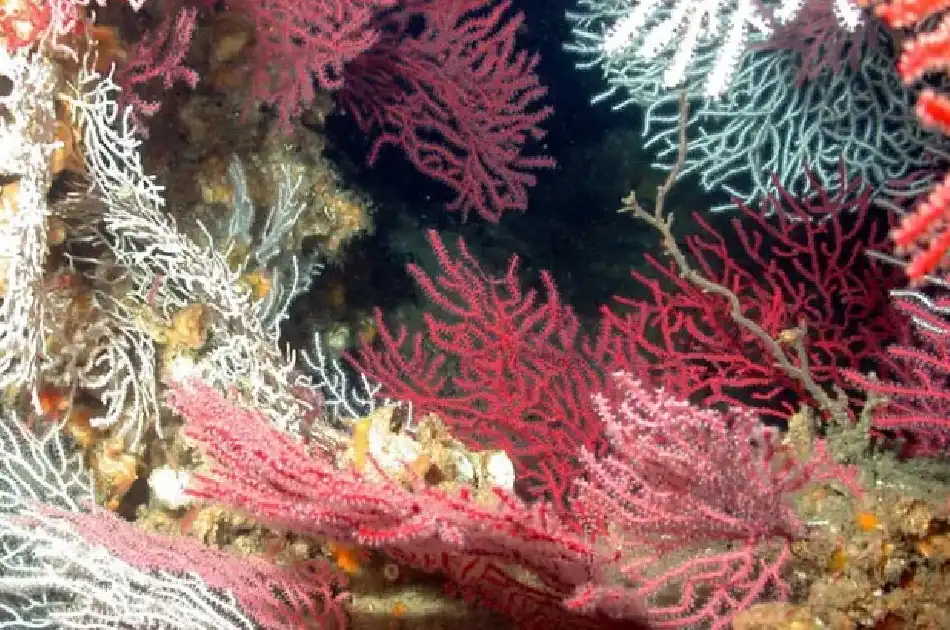
Deep-water corals exist in cold, dark waters beyond the continental shelf, forming unique ecosystems without reliance on symbiotic algae. Bamboo corals, black corals, and gorgonians dominate many deep-sea coral communities. These corals create forest-like structures on seamounts, continental slopes, and underwater canyons, providing essential habitat for deep-sea biodiversity.
Deep water corals create complex three-dimensional habitats in areas previously thought to be biological deserts. Cold-water coral gardens support diverse communities of fish, invertebrates, and other marine life adapted to deep-sea conditions.
Unlike tropical reefs, deep-sea coral ecosystems don’t depend on photosynthesis. Instead, these corals capture organic matter from marine snow, zooplankton, and other food sources drifting down from surface waters. This feeding strategy allows them to thrive in nutrient-rich deep waters.
Deep-sea coral communities face different threats than shallow reefs, including bottom trawling, oil and gas exploration, and deep-sea mining. Climate change affects these ecosystems through ocean acidification and changing deep-water circulation patterns.
Ecosystem Services of Coral Reefs
Coral reefs provide ecosystem services worth hundreds of billions of dollars annually to human societies worldwide. Coastal protection represents one of the most valuable services, with thriving reefs reducing wave energy by up to 97% and protecting shorelines from erosion and storm damage13.
Commercial and subsistence fisheries depend heavily on coral reefs for spawning, nursery, and feeding areas. Over one billion people worldwide rely on reefs for their primary source of protein, while reef-dependent fisheries generate billions in economic value annually.
Tourism and recreation generate significant revenue for tropical nations with coral reefs. Scuba diving, snorkeling, glass-bottom boat tours, and reef appreciation create jobs and foreign exchange earnings essential for many developing countries.
Coastal development benefits from reef protection services that prevent erosion and maintain stable shorelines. Properties behind vibrant reefs have significantly lower property damage during storms compared to unprotected coastlines.
Pharmaceutical discoveries from coral reef organisms have led to treatments for cancer, HIV, heart disease, and other conditions14. The complex chemistry of reef organisms continues to provide new compounds for medical research and drug development.
Cultural and spiritual values of coral reefs cannot be quantified economically but remain essential for many indigenous and coastal communities. Traditional navigation, fishing practices, and cultural ceremonies often center around reef ecosystems.
Marine Life Diversity in Coral Reefs

Coral reef animals demonstrate remarkable diversity and adaptation to reef environments. Over 4,000 fish species inhabit coral reefs, from tiny gobies smaller than a paperclip to massive groupers weighing hundreds of pounds. Each species occupies specific ecological niches that reduce competition and promote coexistence.
Reef fish exhibit extraordinary variety in feeding strategies, body shapes, and behaviors. Cleaner wrasses establish cleaning stations where larger fish queue for parasite removal, while parrotfish use beak-like mouths to graze algae from coral surfaces and occasionally bite off small coral pieces that contribute to the creation of coral sand.
Invertebrate diversity on coral reefs rivals or exceeds that of rainforests15. Sea urchins, sea cucumbers, crabs, shrimp, lobsters, and countless mollusk species fill every available niche. Many invertebrates form cleaning relationships with fish or provide services that benefit the entire reef ecosystem.
Symbiotic relationships abound on coral reefs, creating complex webs of mutual dependence. Clownfish and sea anemones form one of the most famous partnerships, with clownfish providing food scraps and protection in exchange for shelter among stinging tentacles.
Coral reef inhabitants display remarkable adaptations for survival in competitive environments. Camouflage, toxins, symbiosis, and behavioral modifications allow species to avoid predation, secure food, and reproduce successfully in crowded reef communities.
Reef Species and Biodiversity Patterns
These species diversity follows distinct patterns related to geography, depth, and habitat structure. The Coral Triangle in Southeast Asia contains the highest species richness, with diversity generally decreasing with distance from this biodiversity hotspot.
Endemic species on isolated reefs demonstrate the importance of geographic barriers in driving evolutionary diversification. Islands and reef systems separated by deep water often develop unique species found nowhere else on Earth.
Depth gradients create different communities within single reef systems, with species composition changing dramatically from shallow reef crests to deeper fore-reef slopes. Light availability, wave energy, and temperature differences drive these zonation patterns.
Microhabitat diversity within reefs creates numerous specialized niches for different species. Coral species create diverse architectural forms that provide shelter, feeding opportunities, and breeding sites for countless other organisms.
Functional diversity, including different feeding strategies, reproductive behaviors, and ecological roles, maintains reef ecosystem stability. This diversity ensures that essential ecosystem functions continue even when individual species experience population fluctuations.
Sea Turtles

Sea turtles rely heavily on coral reef ecosystems throughout their life cycles. Five of the seven sea turtle species regularly use coral reefs for feeding, shelter, and resting areas. Hawksbill turtles particularly depend on reefs, using specialized beaks to extract sponges from reef crevices.
Green sea turtles graze on seagrass beds adjacent to coral reefs, maintaining healthy grass communities through their feeding activities. These turtles often rest under coral ledges and in caves during the day, emerging at night to feed.
Loggerhead turtles frequently visit coral reefs during their oceanic juvenile phase, finding shelter and food among reef structures. Adult loggerheads may use reef areas as mating and courtship grounds before traveling to nesting beaches.
Invasive Species Threats to Coral Reefs
Invasive species pose significant threats to coral reef ecosystems by disrupting established ecological balances and outcompeting native species. Crown-of-thorns starfish outbreaks can devastate entire reef sections, with single starfish consuming up to 10 square meters of coral tissue annually.
Lionfish invasions in the Caribbean and Atlantic have dramatically altered reef fish communities. These Indo-Pacific natives lack natural predators in Atlantic waters and consume enormous quantities of juvenile reef fish, reducing recruitment and biodiversity.
Invasive algae species can overgrow coral colonies, blocking light and competing for space. These algae often thrive in polluted conditions where native species struggle, creating positive feedback loops that favor invasion over native recovery.
Sponge invasions threaten Caribbean reefs where native sponge predators have been removed by fishing pressure. Some invasive sponges grow rapidly and create toxic compounds that kill surrounding corals and other marine life.
Introduced fish species through aquarium releases pose ongoing threats to native reef communities. Many tropical fish species can establish breeding populations in suitable climates, potentially carrying diseases or outcompeting native species.
Coral Bleaching Mechanisms and Recovery
Coral bleaching occurs when corals expel their symbiotic zooxanthellae in response to stress, leaving behind transparent tissues that reveal the white calcium carbonate skeleton. This process represents a breakdown in the crucial partnership between corals and their algal symbionts.
Temperature stress triggers bleaching when water temperatures exceed normal summer maximums by just 1-2°C for several weeks16. Heat stress disrupts photosynthesis in zooxanthellae, causing them to produce toxic compounds that force corals to expel them.
Light stress can exacerbate temperature bleaching, as intense sunlight combined with elevated temperatures overwhelms the coral’s cellular defenses. Shallow-water corals are particularly vulnerable to this combination of stressors during calm weather periods.
Recovery from bleaching depends on the duration and intensity of stress, local environmental conditions, and coral species. Mild bleaching events lasting days or weeks may result in full recovery, while severe events lasting months can cause widespread mortality.
Symbiont shuffling allows some corals to recover by hosting different zooxanthellae strains better adapted to current conditions. This process may help corals develop increased heat tolerance, though it often comes with reduced growth rates.
Ocean Acidification and Coral Reefs
Ocean acidification fundamentally alters seawater chemistry in ways that directly threaten coral reef ecosystems. As atmospheric carbon dioxide concentrations increase, oceans absorb more CO2, forming carbonic acid that lowers ocean pH and reduces carbonate ion availability.
Reduced carbonate availability makes it harder for corals to precipitate calcium carbonate for skeleton construction. Even small decreases in carbonate saturation significantly slow coral calcification rates, affecting growth and reef accretion.
Dissolution of existing coral skeletons becomes more likely as ocean chemistry changes. Acidic conditions can actually dissolve calcium carbonate faster than corals can produce it, leading to net reef erosion rather than growth.
Synergistic effects between ocean acidification and warming create particularly dangerous conditions for corals. Heat stress weakens corals’ ability to cope with acidification, while acidification reduces their resilience to temperature stress.
Early life stages of corals show extreme sensitivity to acidification. Coral larvae struggle to develop proper skeletons in acidic conditions, and newly settled juveniles face higher mortality rates, threatening reef recruitment and long-term sustainability.
Natural Disasters and Reef Recovery
Natural disasters like hurricanes, cyclones, and tsunamis can devastate coral reef ecosystems through physical destruction, but these events also play important ecological roles in reef dynamics. Storm damage creates new habitats, promotes genetic mixing, and drives evolutionary adaptations.
Hurricane impacts vary greatly depending on storm intensity, reef structure, and coral species composition. Branching corals typically suffer more damage than massive species, but they also recover faster through fragmentation and regrowth.
Post-storm recovery depends on water quality, local stress factors, and the availability of coral larvae for recolonization. Reefs with good water quality and low pollution levels typically recover faster than degraded reefs facing multiple stressors.
Debris fields created by storms can damage corals through abrasion as rubble moves with waves and currents. However, storm energy can transport coral fragments to new locations for natural restoration.
Adaptive management strategies consider natural disturbance patterns when planning reef conservation efforts. Understanding historical storm frequencies and impacts helps managers anticipate recovery timelines and prioritize restoration efforts in strategic locations.
Coastal Areas and Reef Interactions
Coastal areas and coral reefs form interconnected systems where land-based activities significantly impact aquatic ecosystems. Terrestrial runoff carries sediments, nutrients, and pollutants that can dramatically alter reef health and community composition.
Buffer zones between coastal development and reefs help filter pollutants and reduce direct impacts. Mangrove forests, seagrass beds, and coastal wetlands serve as natural filters that improve water quality before it reaches reef systems.
Coastal development pressure continues to increase in many reef regions as human populations grow and tourism expands. Proper planning and regulation can minimize development impacts while still allowing sustainable economic growth.
Watershed management affects coral reefs far from shore through river systems that transport agricultural chemicals, sewage, and sediments to marine environments. Effective reef protection requires coordination across entire watersheds.
Coastal protection provided by reefs saves billions in infrastructure costs and reduces the need for artificial barriers like seawalls. This ecosystem service becomes increasingly valuable as sea levels rise and storm intensity increases17.
Commercial Fisheries and Sustainable Harvesting
Commercial fisheries depend heavily on coral reefs for spawning aggregations, nursery areas, and adult habitat for many economically important species. Over 200 million people worldwide depend on reef fisheries for their livelihood and protein needs18.
Overfishing disrupts reef ecosystem balance by removing key species that maintain ecological functions. Herbivorous fish removal leads to algal overgrowth, while predator removal can cascade through the food web, affecting species at all levels.
Sustainable fishing practices include gear restrictions, size limits, seasonal closures, and marine protected areas that allow fish populations to recover. Ecosystem-based management considers the interconnections between species rather than managing single species in isolation.
Alternative livelihoods for fishing communities help reduce pressure on reef resources while maintaining community well-being. Ecotourism, aquaculture, and sustainable coastal development can provide economic alternatives to destructive fishing practices.19
Traditional fishing practices often incorporate sustainable elements developed over generations. Combining traditional knowledge with modern science can create more effective management strategies that communities are more likely to support.
Future Outlook for Coral Reef Conservation
The future of coral reef ecosystems depends largely on humanity’s ability to address climate crisis while implementing effective local conservation measures20. Limiting global warming to 1.5°C could save many reefs from complete destruction, though even this scenario requires significant adaptation efforts21.
Technological advances in restoration, monitoring, and management offer tools for helping reefs survive and adapt to changing conditions. However, these technologies must be scaled up and applied globally to make meaningful impacts.
International cooperation through agreements like the Paris Climate Accord and regional reef conservation initiatives provides frameworks for coordinated action. Successful reef conservation requires efforts from local to global scales working in harmony.
Economic incentives for reef conservation are growing as people recognize the value of ecosystem services. Blue bonds, payment for ecosystem services, and sustainable financing mechanisms help fund long-term conservation efforts.
Youth engagement and education create hope for future reef conservation as new generations develop deep appreciation for aquatic ecosystems. Environmental education programs and citizen science projects build public support for conservation action.
Adaptive management strategies that can respond to changing conditions and new scientific understanding will be essential for reef conservation. Flexibility and willingness to adjust approaches based on results will improve conservation effectiveness.
Restoration Technologies and Innovation
Innovative restoration technologies offer new hope for coral reef recovery at unprecedented scales and speeds. Land-based coral farming allows controlled growing conditions that can accelerate coral expansion rates and condition corals for greater resilience.
Microfragmentation techniques break corals into small pieces that heal and grow faster than whole colonies. These techniques can increase growth rates by 25-50 times normal rates, dramatically reducing the time needed for restoration projects.
Coral probiotics introduce beneficial bacteria that enhance coral health and resistance to bleaching and disease. These treatments show promise for improving coral survival in increasingly stressful ocean conditions.
Assisted gene flow involves moving coral larvae or fragments between populations to increase genetic diversity and transfer beneficial traits. This technique helps maintain connectivity between isolated populations and spread adaptation.
Automated monitoring systems using artificial intelligence and machine learning help track restoration success and optimize management decisions. These technologies enable large-scale monitoring that would be impossible with traditional methods alone.
Community-Based Conservation Success Stories
Community-based conservation initiatives demonstrate that local action can achieve significant reef protection results. In the Philippines, community-managed marine protected areas have shown remarkable success in restoring fish populations and coral cover.
Traditional ecological knowledge contributes valuable insights to reef conservation efforts. Indigenous and local communities often possess detailed understanding of reef ecology developed over generations of observation and interaction.
Economic benefits from conservation help sustain community participation in protection efforts. Ecotourism revenue, sustainable fisheries, and alternative livelihoods provide incentives for communities to protect their reefs.
Capacity building programs train local community members in monitoring techniques, restoration methods, and management practices. This builds local expertise and creates long-term stewardship capabilities within communities.
Collaborative management between communities, governments, industry, and NGOs often produces the most effective conservation outcomes. These partnerships combine local knowledge, scientific expertise, and institutional support for comprehensive reef protection.
Coral Reef Research and Scientific Advances
Coral reef research continues to reveal new insights into ecosystem functioning, resilience mechanisms, and conservation strategies. Advanced genetic techniques help scientists understand coral adaptation and guide restoration efforts using the most resilient genotypes.
Long-term monitoring programs provide essential data on reef changes over time, helping separate natural variation from human-caused changes. These datasets become increasingly valuable as climate crisis impacts intensify.
Experimental research on coral resilience helps identify which species and genotypes are most likely to survive future conditions. This information guides restoration efforts toward the most promising candidates for long-term success.
Scientific collaboration between disciplines brings together marine biologists, climatologists, social scientists, and economists to address reef conservation holistically. Interdisciplinary approaches recognize that reef conservation involves both natural and human systems.
Open science initiatives make research data and findings more accessible to managers, communities, and other stakeholders. Rapid sharing of research results accelerates the implementation of new conservation strategies.
Conclusion
Coral reef ecosystems represent one of nature’s greatest achievements, supporting extraordinary biodiversity while providing essential services to our planet. These underwater cities face unprecedented threats from climate crisis, osteoporosis of the sea, and human activities, yet innovative restoration efforts and conservation initiatives offer hope for their future.
The complexity and interconnectedness of coral reef ecosystems make their conservation both challenging and essential. Every species, from the smallest coral polyp to the largest reef shark, plays a crucial role in maintaining these delicate balances that have evolved over thousands of years.
Scientific advances in restoration technology, monitoring capabilities, and understanding of coral resilience provide new tools for reef conservation. However, the success of these efforts ultimately depends on addressing the root causes of reef degradation, particularly climate crisis and local human impacts.
Community engagement and international cooperation are essential for scaling conservation efforts to meet the magnitude of threats facing coral reefs. Local stewardship combined with global climate action offers the best hope for preserving these ecosystems for future generations.
The responsibility to conserve coral reefs extends beyond marine biologists and conservationists to every individual on Earth. Through conscious choices, support for restoration efforts, and advocacy for climate action, we can all contribute to preserving these magnificent ecosystems.
Education and awareness continue to play vital roles in building support for reef conservation. As more people understand the incredible value and vulnerability of coral reefs, public pressure for protection and restoration efforts grows stronger.
The time for action is now. Every coral saved, every bleaching event prevented, and every reef restored brings us closer to a future where coral reef ecological systems continue to thrive, supporting marine life and human communities alike. Together, we can ensure that these natural wonders continue to inspire and sustain life beneath the waves for generations to come.
About Coral Vita
Coral Vita is a mission-driven company dedicated to restoring our world’s dying and damaged reefs. Using innovative land-based farming techniques, Coral Vita grows diverse and resilient corals in months instead of the decades they take in nature. These corals are then transplanted into threatened reefs, helping to preserve ocean biodiversity while protecting coastal communities that depend on healthy reefs for protection, food, and income].
Founded by environmental entrepreneurs Sam Teicher and Gator Halpern, Coral Vita’s high-tech coral farms incorporate breakthrough methods to restore reefs in the most effective way possible. In 2021, the company was recognized as the inaugural winner of Prince’s William’s Revive Our Oceans Earthshot Prize Winner for their pioneering work in coral restoration.
To learn more about Coral Vita’s work or to get involved in coral reef conservation efforts, visit their website at www.coralvita.co or contact them directly through their Contact Us page.
FAQ
What makes coral reef ecosystems so important?
Coral reef ecological systems are vital because they support over 25% of all marine species while providing essential services including coastal protection, fisheries support, and tourism revenue. They protect shorelines from erosion and storm damage while serving as nurseries for countless marine animals.
How does coral bleaching affect marine life?
Coral bleaching disrupts the entire reef ecosystem by removing the foundation habitat that marine life depends on. When corals die from bleaching, fish populations decline, biodiversity drops, and the reef’s ability to support marine animals is severely compromised.
Can damaged coral reefs recover naturally?
Coral reefs can recover from damage if local stressors are reduced and environmental conditions improve. However, recovery takes decades and requires protection from further disturbance. Climate crisis has made natural recovery increasingly difficult due to repeated bleaching events.
What are the most effective ways to conserve coral reefs?
The most effective protection strategies combine global climate action to reduce ocean warming with local conservation efforts, including marine protected areas, water quality improvement, sustainable fishing practices, and active restoration through coral farming and outplanting programs.
References
- Coral Reef Alliance. (2021). Biodiversity. Retrieved from
https://coral.org/en/coral-reefs-101/why-care-about-reefs/biodiversity/ ↩︎ - Wikipedia. (2025). Coral reef. Retrieved from
https://en.wikipedia.org/wiki/Coral_reef ↩︎ - NOAA’s Coral Reef Conservation Program. (n.d.). Coral Facts. Retrieved from https://coralreef.noaa.gov/education/coralfacts.html ↩︎
- Wikipedia. (2025). Cnidaria. Retrieved from
https://en.wikipedia.org/wiki/Cnidaria ↩︎ - Gattuso, J. P., Allemand, D., & Frankignoulle, M. (1999). Photosynthesis and calcification at cellular, organismal and community levels in coral reefs: A review on interactions and control by carbonate chemistry. American Zoologist, 39, 160-183. ↩︎
- Lin, C. H., Takahashi, S., Mulla, A. J., & Nozawa, Y. (2021). Moonrise timing is key for synchronized spawning in coral Dipsastraea speciosa. Proceedings of the National Academy of Sciences, 118(34), e2101985118. ↩︎
- Great Barrier Reef Foundation. (n.d.). Understanding heat tolerance in corals. Retrieved from https://www.barrierreef.org/news/explainers/understanding-heat-tolerance-in-corals-great-barrier-reef ↩︎
- NOAA Ocean Explorer. (n.d.). The Coral Triangle and Marine Biodiversity. Retrieved from https://oceanexplorer.noaa.gov/okeanos/explorations/10index/background/biodiversity/biodiversity.html ↩︎
- Wikipedia. (2025). Coral Triangle. Retrieved from
https://en.wikipedia.org/wiki/Coral_Triangle ↩︎ - Great Barrier Reef Foundation. (n.d.). What is biodiversity and why is it so important? Retrieved from https://www.barrierreef.org/news/explainers/what-is-biodiversity-and-why-is-it-so-important ↩︎
- NOAA’s Coral Reef Conservation Program. (n.d.). Coral Facts. Retrieved from https://coralreef.noaa.gov/education/coralfacts.html ↩︎
- NOAA’s Coral Reef Conservation Program. (n.d.). Coral Facts. Retrieved from https://coralreef.noaa.gov/education/coralfacts.html ↩︎
- Smithsonian Ocean. (2023). Coral Reefs Need You. Retrieved from
https://ocean.si.edu/ecosystems/coral-reefs/coral-reefs-need-you ↩︎ - Smithsonian Ocean. (2023). Coral Reefs Need You. Retrieved from
https://ocean.si.edu/ecosystems/coral-reefs/coral-reefs-need-you ↩︎ - Coral Reef Alliance. (2021). Biodiversity. Retrieved from
https://coral.org/en/coral-reefs-101/why-care-about-reefs/biodiversity/ ↩︎ - EPA. (2025). Threats to Coral Reefs. Retrieved from
https://www.epa.gov/coral-reefs/threats-coral-reefs ↩︎ - Smithsonian Ocean. (2023). Coral Reefs Need You. Retrieved from
https://ocean.si.edu/ecosystems/coral-reefs/coral-reefs-need-you ↩︎ - Smithsonian Ocean. (2023). Coral Reefs Need You. Retrieved from
https://ocean.si.edu/ecosystems/coral-reefs/coral-reefs-need-you ↩︎ - Great Barrier Reef Foundation. (n.d.). Understanding heat tolerance in corals. Retrieved from https://www.barrierreef.org/news/explainers/understanding-heat-tolerance-in-corals-great-barrier-reef ↩︎
- U.S. Geological Survey. (n.d.). Measuring Coral Growth to Help Restore Reefs. Retrieved from https://www.usgs.gov/centers/spcmsc/science/measuring-coral-growth-help-restore-reefs ↩︎
- UN Environment Programme. (2024). Coral reefs. Retrieved from
https://www.unep.org/topics/ocean-seas-and-coasts/blue-ecosystems/coral-reefs ↩︎
